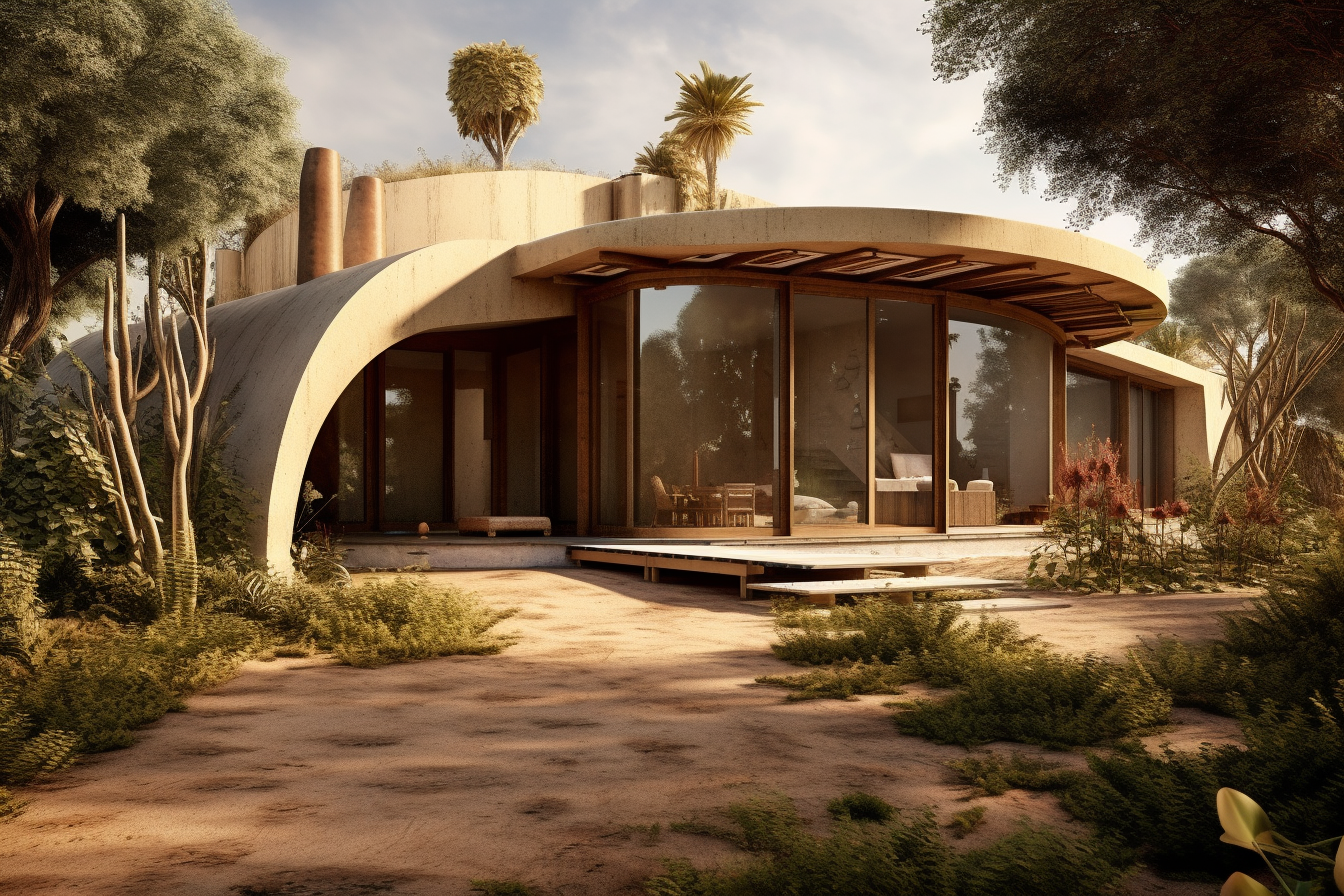
Modern Mud Houses: A Sustainable Building Practice
We are reader-supported. When you buy through links on our site, we may earn affiliate commission.
In recent years, sustainable building practices have gained popularity and one of the most traditional and eco-friendly building materials is mud. Modern mud houses are gaining momentum as a sustainable alternative to conventional building materials like concrete and steel. Mud houses have existed for thousands of years, but modern techniques and designs have given them a new lease on life.
Rammed earth houses have always been a popular choice of shelter in developing countries where people have limited resources and access to modern building materials. However, architects and builders in developed countries have also embraced mud houses due to their sustainability and affordability. Mud houses are made from natural materials and have a lower carbon footprint than conventional building products.
6 Benefits of Modern Mud Houses
Contemporary mud houses offer several advantages due to modern-day materials. Below are some of them:
1. Eco-friendliness
Modern mud houses are an eco-friendly alternative for reducing their carbon footprint. Mud is a natural and abundant material that does not require much energy to manufacture or transport. New mud houses are also biodegradable and can be recycled at the end of their life span, making them a suitable choice for the environment.
2. Insulation Properties
The insulation capabilities of contemporary mud homes are one of their most significant benefits. Because of its excellent thermal mass, mud can store and release heat slowly, maintaining a stable interior temperature throughout the day. This means mud houses are warm in winter and cool in summer, reducing the need for heating and cooling systems. As a result, rammed earth houses are energy-efficient, which saves homeowners some money on their utility bills.
3. Fire-Resistant
Unlike traditional mud houses, modern mud houses can incorporate conventional materials to make them fire-resistant. Builders construct a fire-resistant modern mud house with lime, cement or sand. They can also be designed with features like metal roofs, fire-resistant doors and windows made of tempered glass. This helps to increase the durability and density of the walls, making them more resistant to an inferno. It is crucial to note that while contemporary mud houses can be fire-resistant, they still require proper maintenance to ensure their safety.
4. Soundproofing
Recent mud houses, like the traditional ones, can provide excellent soundproofing capabilities. The thickness and density of mud walls provide a natural barrier that can block sound from outside, creating a quiet and peaceful indoor environment. Mud walls can absorb and dampen sound waves, reducing room echoes and reverberation. This makes new mud houses particularly suitable for locations with high levels of noise pollution, such as near busy roads or airports. Modern mud houses can add insulation to the walls for additional soundproofing effects.
5. Low Cost
Modern mud houses can be cheaper than traditional houses made of bricks, concrete or other materials. Rammed earth is a locally available, renewable and natural resource that can be obtained cheaply, making it an affordable option for building structures. Also, the building process of a mud house does not require highly skilled labor or specialized equipment, which can further reduce the construction cost.
6. Customizable
Another advantage of modern mud houses is that they are highly customizable. Mud can be molded into any shape and size and mixed with other natural materials like straw or rice husks to create different textures and finishes. Modern mud houses can be designed to meet the homeowner’s needs and expectations and can be adapted to suit different climates and environments.
Concerns About Mud Houses
While mud houses can offer many benefits such as sustainability, affordability and energy efficiency, some concerns are associated with building and living in mud houses. For example, mud is a porous material that can absorb moisture, leading to mold and mildew. This is why modern mud houses often incorporate moisture barriers and drainage systems to prevent water from entering the walls.
Another concern is the susceptibility of mud houses to termite damage. Termites often feed on mud walls, leading to structural damage and safety concerns. To prevent termite damage, mud houses can be built with termite-resistant materials or treated with pesticides.
In addition, mud houses may not be suitable for all climate conditions. In areas with heavy rainfall, mud walls may erode or become unstable over time. During hot and dry weather circumstances, mud walls may crack and deteriorate due to exposure to the sun.
7 Tips for Managing Modern Mud Houses
If you own a modern mud house or are planning to build one, below are some tips you can employ in managing your building:
- Regularly inspect the walls: Inspect the mud walls of your house regularly for any signs of damage, such as cracks or erosion. Promptly repairing any damage can prevent further deterioration and ensure the longevity of the walls.
- Properly maintain the roof: The roof is an essential part of any house, but it is especially critical in a mud house. Ensure the roof is appropriately maintained and free of leaks, as moisture can cause damage to the mud walls.
- Maintain proper ventilation: Proper ventilation prevents moisture buildup and promotes air circulation. Use exhaust fans and open windows to ensure adequate ventilation throughout the house.
- Monitor humidity levels: High humidity levels can lead to moisture buildup and potential damage to the mud walls. Use a hygrometer to monitor indoor humidity levels and take steps to reduce humidity if necessary.
- Avoid harsh cleaning products: Rammed earth walls require gentle cleaning to avoid damaging the natural material. Avoid using harsh chemicals or abrasive materials when cleaning mud walls.
- Take fire safety precautions: While modern mud houses can be made fire-resistant, it is still essential to take precautions to prevent fires. Install smoke detectors, avoid using open flames indoors, and properly store flammable materials.
- Be mindful of pests: Termites and other pests can threaten mud walls. Take precautions to prevent pest infestations, such as using termite-resistant materials and regularly inspecting the walls for signs of damage.
Build Modern Mud Houses for a Sustainable Future
Modern mud houses are a sustainable building practice that offers many benefits to homeowners. As more people become aware of the benefits of mud houses, we can expect to see them become a more common sight in communities worldwide.
Share on
Like what you read? Join other Environment.co readers!
Get the latest updates on our planet by subscribing to the Environment.co newsletter!
About the author
Jane Marsh
Starting from an early age, Jane Marsh loved all animals and became a budding environmentalist. Now, Jane works as the Editor-in-Chief of Environment.co where she covers topics related to climate policy, renewable energy, the food industry, and more.





